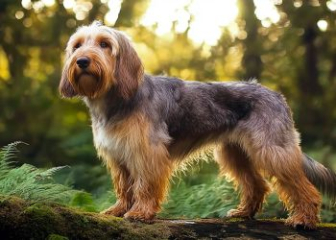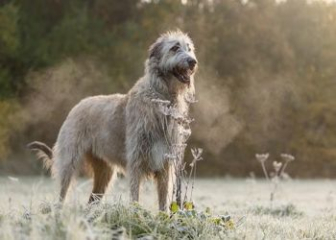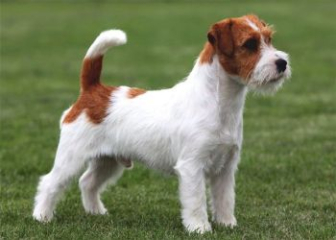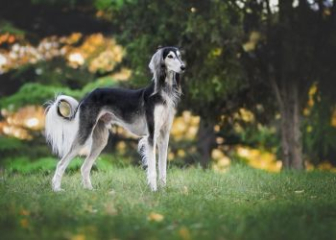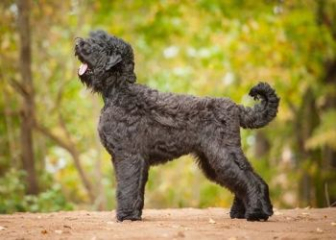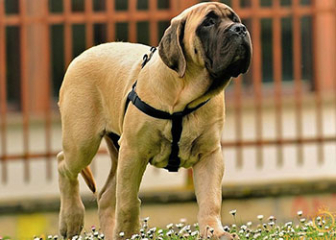Samoyed – The Beautiful, Fluffy, Snow-White Dog
Blog | by
The Samoyed is a sled dog originating from Siberia, known for its thick, snow-white fur and a perpetually smiling face, making it a beloved pet for many.
Originating from the sled dogs of Siberia, Russia, the Samoyed boasts a stunning appearance with its dense, snowy coat, a charming "smiling" expression, and a gentle temperament. It is a favorite among pet lovers.
In today’s article, let's explore in detail the origin, appearance, personality, and care tips for this beautiful dog with Dog breed.
Where Does the Samoyed Come From?
The Samoyed’s Origin: Siberia, Russia
The Samoyed breed has existed for thousands of years and originates from Siberia, Russia. It was named after the Samoyede tribe, a group of nomadic people who first domesticated these dogs for herding livestock and pulling sleds.
In the 19th and early 20th centuries, Samoyeds were introduced to the West through Arctic and Antarctic expeditions. Their striking white coat and majestic appearance quickly caught the attention of British royalty and nobility, leading to their widespread breeding across Europe and the United States. Over time, they became a beloved family pet worldwide.
Physical Characteristics of the Samoyed
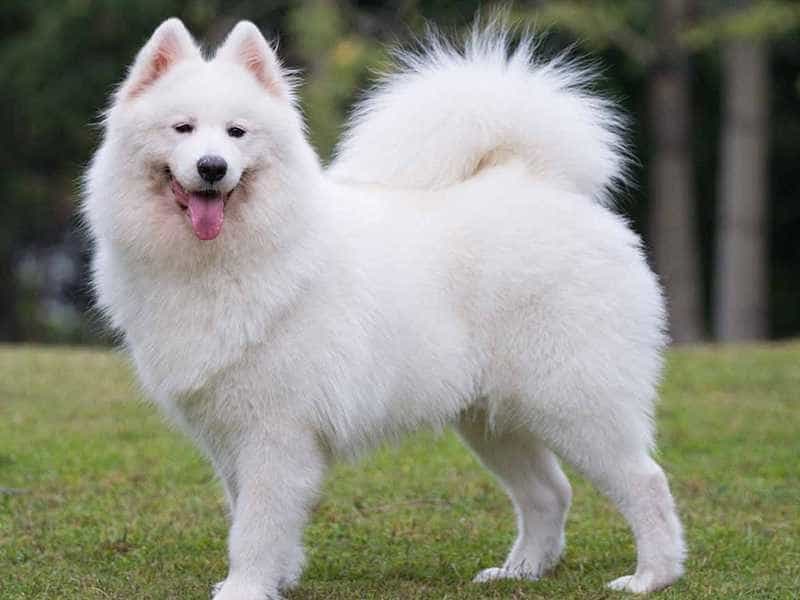
The Samoyed’s Physical Appearance: Large Build with a Snow-White Coat
The Samoyed is a strikingly beautiful dog breed known for its snow-white coat and intelligent, alert face. Let’s take a closer look at the physical characteristics of this stunning dog:
- Height: Males stand between 53 - 60 cm, while females range from 48 - 53 cm (according to AKC standards).
- Weight: Males weigh between 20 - 29 kg, and females range from 16 - 23 kg (according to AKC standards).
- Eyes: Almond-shaped, typically black or brown, with some rare instances of green eyes.
- Ears: Triangular in shape, standing upright, and covered with a thick layer of fur.
- Tail: Curled upwards and resting on the back. In a relaxed state, it lies across the back and tilts to one side.
- Coat: Double-layered, with the outer coat being long and coarse, and the undercoat soft and short, designed to keep the dog warm. Samoyeds shed seasonally.
- Coat Color: Pure white or a cream color, often resembling the color of freshly baked bread.
- Face: Known for the "Samoyed Smile", the breed’s signature happy, cheerful expression, which comes from the natural upward curve of their mouth.
- Body: Straight back, straight legs, and a well-developed muscular build.
- Gait: Agile and graceful, moving with elegance.
Personality of the Samoyed
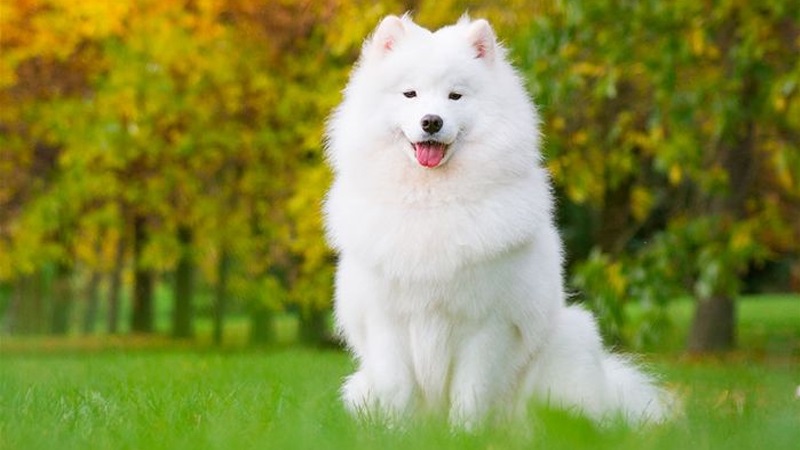
The Samoyed and Its Signature "Samoyed Smile"
The Samoyed is known for its bright, cheerful smile, which reflects its friendly and affectionate personality. Let’s explore some of the key personality traits of this lovable breed:
- Friendly and Social: Samoyeds are incredibly friendly and love being around people. They are not aggressive, making them poor guard dogs but excellent companions.
- Loyal and Affectionate: These dogs are extremely devoted to their owners. They crave attention, cuddles, and even enjoy being pampered.
- Intelligent: Samoyeds are highly intelligent and quick learners, but they can also be stubborn at times.
- Energetic and Playful: Originally bred as sled dogs, Samoyeds are very active and love running, playing, and outdoor activities.
- Talkative and Vocal: Samoyeds love to "talk" with their owners through barks and howls. Since they are quite vocal, early training is recommended to prevent excessive barking.
Proper Care for a Samoyed
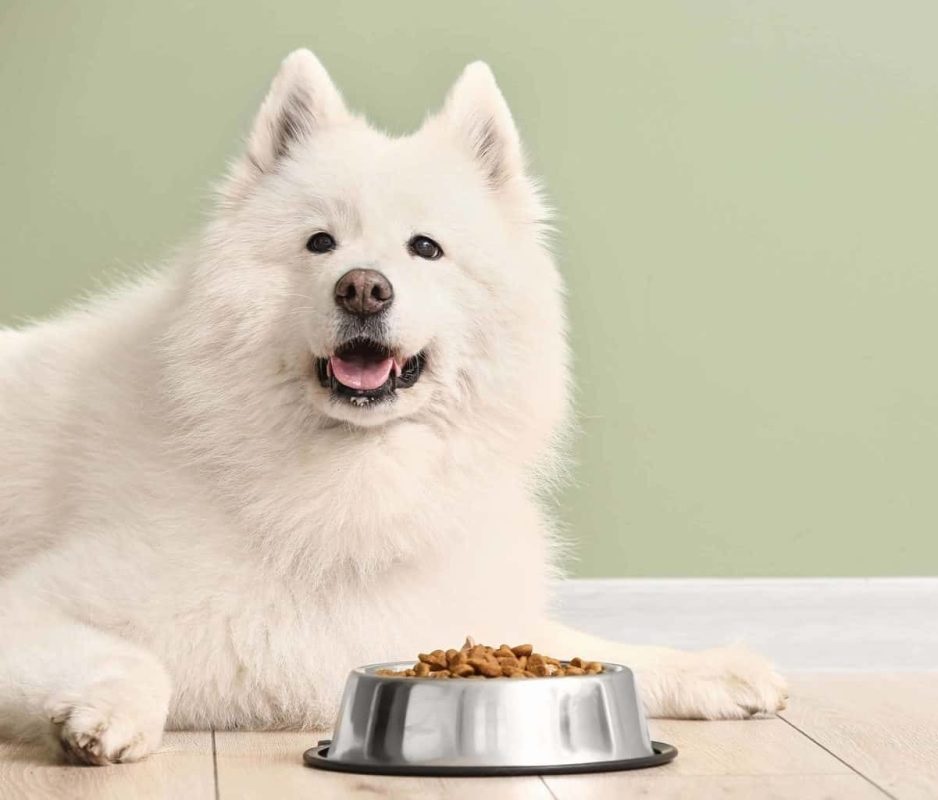
Samoyeds Require a Proper Diet
If you’re wondering whether Samoyeds are easy to care for, let's find out together! Since Samoyeds originate from cold, snowy climates, they require special care when living in warmer regions like Vietnam. From diet and sleep to hygiene, it's essential to ensure your Samoyed stays healthy and happy. Here’s a detailed guide on how to care for their diet:
Specialized Diet for Samoyeds
For a healthy and strong Samoyed, a balanced diet is crucial. Below is the recommended nutritional breakdown for Samoyeds:
| Nutrient | Recommended Amount | Food Sources | Role |
|---|---|---|---|
| Protein | 50 - 60% of diet | Beef, chicken, pork, fish, eggs, liver | Provides energy, supports strong muscles |
| Fat | 10 - 15% | Fish oil, animal fat | Keeps the coat healthy and shiny |
| Carbohydrates | 20 - 30% | Sweet potatoes, brown rice, oats | Provides energy |
| Vegetables & Fruits | Moderate amounts | Carrots, pumpkin, zucchini, apples, bananas | Supplies vitamins, minerals, and fiber |
| Dry Dog Food | Optional supplement | High-quality, protein-rich kibble | Additional energy source |
Important Feeding Tips
- For puppies under 6 months: Feed 4 - 5 small meals per day with soft food like porridge or slow-cooked meals.
- For Samoyeds over 6 months: Reduce to 3 meals per day and gradually introduce solid food and kibble. Avoid very hard foods that could harm their teeth and digestion.
- Always provide fresh water to prevent dehydration.
Coat and Hygiene Care
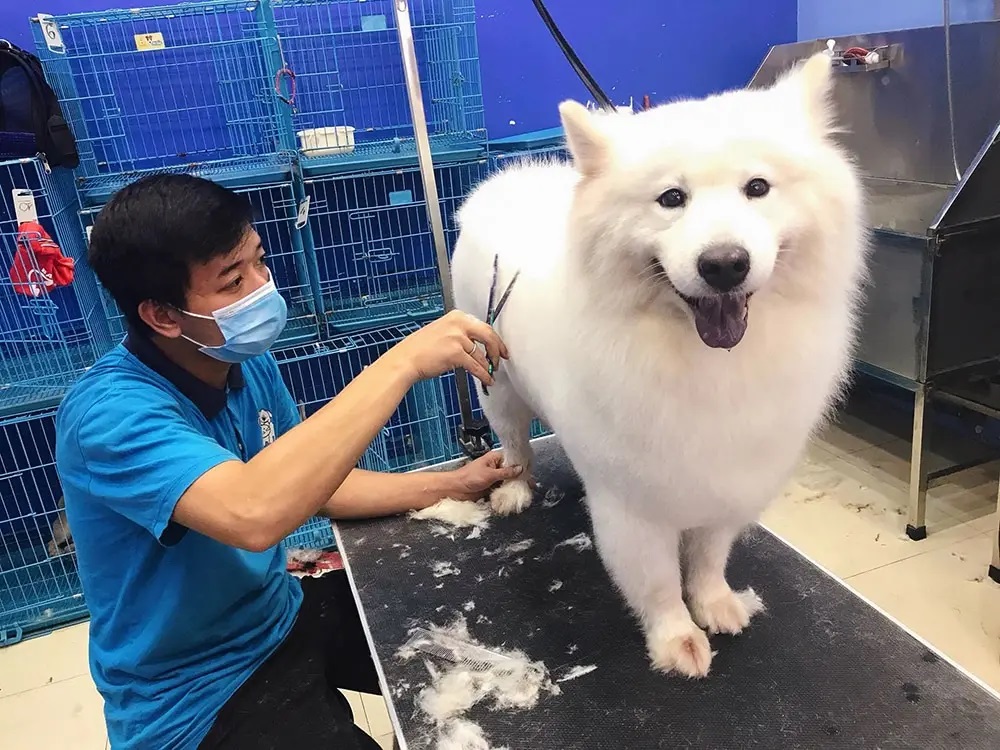
Samoyeds Need Regular Grooming
Samoyeds have a very thick double coat, which can be problematic in hot climates like Vietnam, especially during summer. Proper coat care is essential to prevent health issues.
Coat Care Tips for Samoyeds
- Brush their fur 3 - 4 times per week to keep it smooth and remove loose hair.
- During shedding season, brush them daily to manage excessive fur loss.
- Trim their fur in hot weather to keep them cool and comfortable.
- Bathe them 1 - 2 times per month or when they get too dirty. Always use dog-friendly shampoo to prevent skin irritation.
- Dry them thoroughly with a towel and a blow dryer after bathing.
- Clean their ears weekly to prevent infections.
- Wipe their face regularly and remove any eye discharge.
- Brush their teeth 2 - 3 times per week to prevent dental issues.
- Trim their nails regularly to avoid discomfort or pain while walking and playing.
Exercise and Training
Samoyeds are highly energetic dogs, so they require at least 30 - 60 minutes of exercise daily. Take them for walks and playtime to keep them happy and mentally stimulated.
They also need consistent training from an early age. Teach them basic commands like “come,” “sit,” “stay,” and “quiet” to prevent stubborn behavior.
Vaccination and Health Checkups
To keep your Samoyed in good health, follow these veterinary care guidelines:
- Vaccinations: Ensure they receive core vaccines like 5-in-1, 7-in-1, and rabies shots.
- Deworming: Conduct deworming 2 - 3 times a year.
- Routine checkups: Take them for a health checkup every 6 months.
- If you notice any unusual symptoms, visit a veterinarian immediately.
Suitable Living Environment
Since Samoyeds originate from cold climates, they need a cool and comfortable living space:
- Avoid exposing them to direct sunlight for long periods.
- Keep them in a cool, well-ventilated area, and if possible, provide air conditioning or a fan to prevent heatstroke.
Common Health Issues in Samoyeds
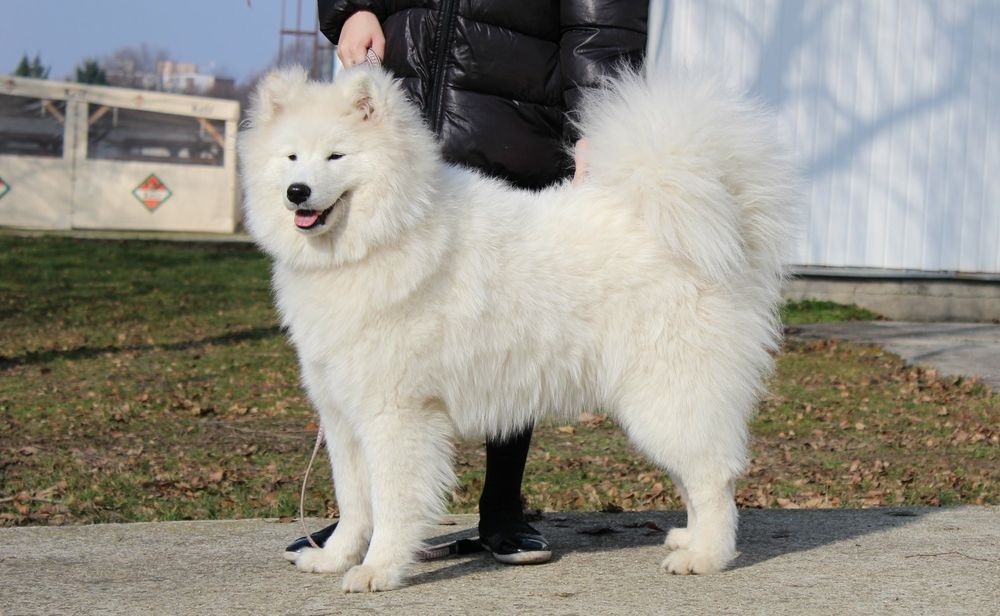
Samoyeds Are Prone to Genetic Diseases
Samoyeds are susceptible to several hereditary diseases, some of which are rare in other dog breeds. These include hereditary kidney disease, progressive retinal atrophy (PRA), and pulmonary stenosis. Let’s explore these conditions in detail.
1. Hereditary Kidney Disease – Samoyed Hereditary Glomerulopathy
This is a severe genetic disorder that commonly affects Samoyeds, with males being at higher risk.
- Cause: Inherited through X-linked recessive genes.
- Symptoms: Lethargy, muscle loss, kidney failure, and even hearing loss.
- Treatment: Veterinary treatment involves cyclosporine A and ACE inhibitors.
2. Diabetes
Diabetes is a serious condition that often develops in middle-aged and senior Samoyeds (7+ years old). Samoyeds are more prone to this disease compared to other breeds.
- Causes: Chronic pancreatic inflammation, genetic factors, and an unhealthy diet.
- Symptoms: Excessive thirst, frequent urination, and unexplained weight loss.
- Prevention & Treatment: Maintain a healthy diet, and if symptoms worsen, consult a veterinarian for medical intervention.
3. Progressive Retinal Atrophy (PRA)
PRA, also known as degenerative retinal disease, usually affects Samoyeds between the ages of 2 - 5 years and can gradually lead to blindness.
- Cause: Genetic mutation.
- Symptoms: Difficulty seeing at night, followed by progressive vision loss.
- Prevention & Treatment: Selective breeding from healthy parents and regular eye checkups.
4. Pulmonary Stenosis
Pulmonary stenosis is a serious heart condition commonly found in Samoyeds.
- Cause: Genetic disorder.
- Symptoms: Breathing difficulties, irregular heartbeat, and fatigue after minimal activity.
- Prevention & Treatment: Avoid overexertion, conduct regular veterinary checkups, and seek early medical intervention if symptoms appear.
Samoyed Price Guide
If you’re interested in buying a Samoyed puppy, here’s an estimated price range based on origin:
| Origin | Estimated Price (VND million) |
|---|---|
| Samoyed born in Vietnam | 7 - 12 million |
| Imported from Thailand | 30 - 60 million |
| Imported from Europe | 50+ million |
For those on a budget, mixed-breed Samoyeds are available for 1 - 3 million VND. Popular crossbreeds include Samoyed x Husky, Samoyed x Alaskan Malamute, and Samoyed x local breeds.
Frequently Asked Questions About Samoyeds
1. How much does a white Samoyed cost?
Samoyed prices vary based on origin and purity. Prices range from 7 to 60 million VND. Check the price guide above to find an option that suits your budget.
2. Where can I buy a 2-month-old Samoyed?
Many pet stores, online platforms, and social media marketplaces offer 2-month-old Samoyed puppies at different prices. Make sure to buy from reputable breeders to ensure the health and purity of the dog.
3. Are Samoyeds aggressive?
No, Samoyeds are naturally friendly and gentle. They rarely show aggression. However, it’s important not to tease or provoke them unnecessarily.
Beautiful Samoyed Pictures
Below, we’ve compiled a collection of adorable and stunning Samoyed photos for you to enjoy!
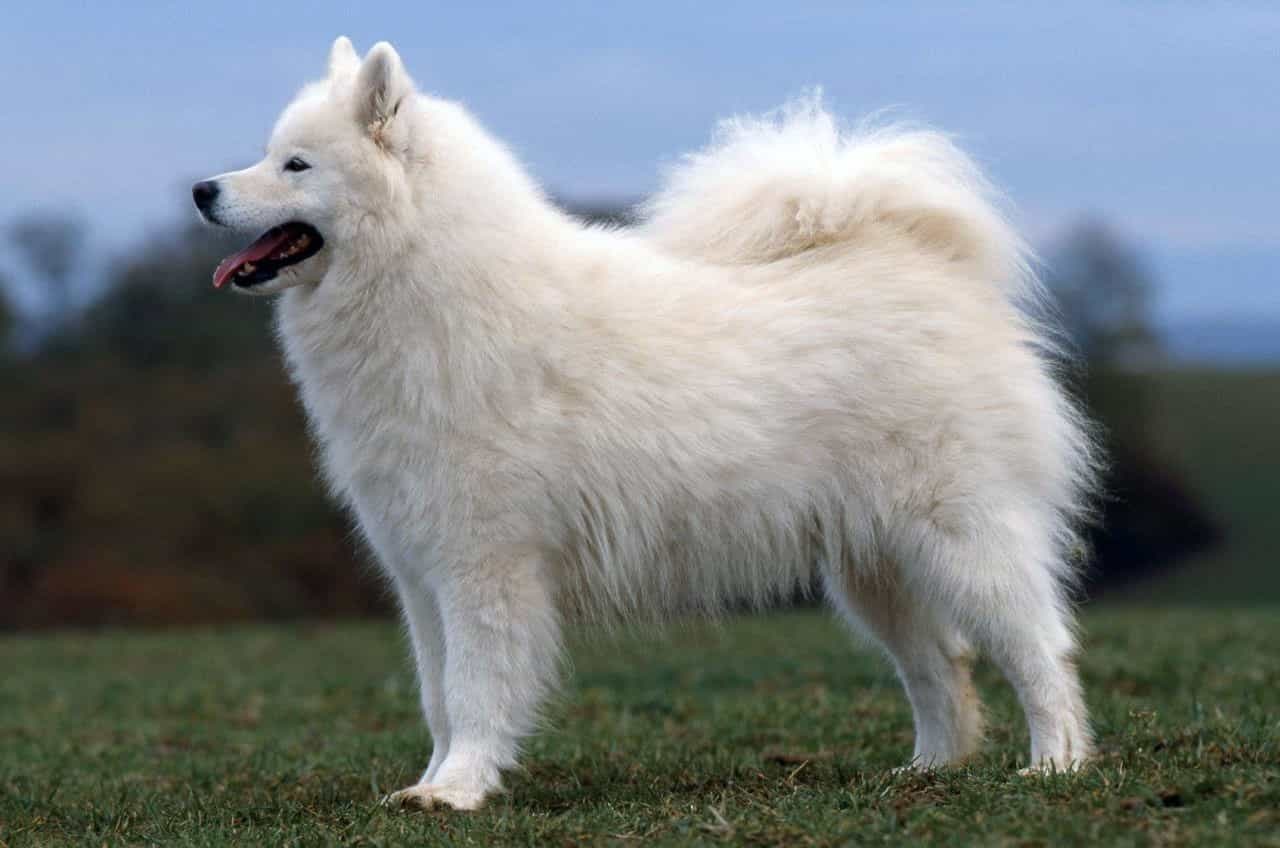
Samoyed dogs are large with great height and weight.
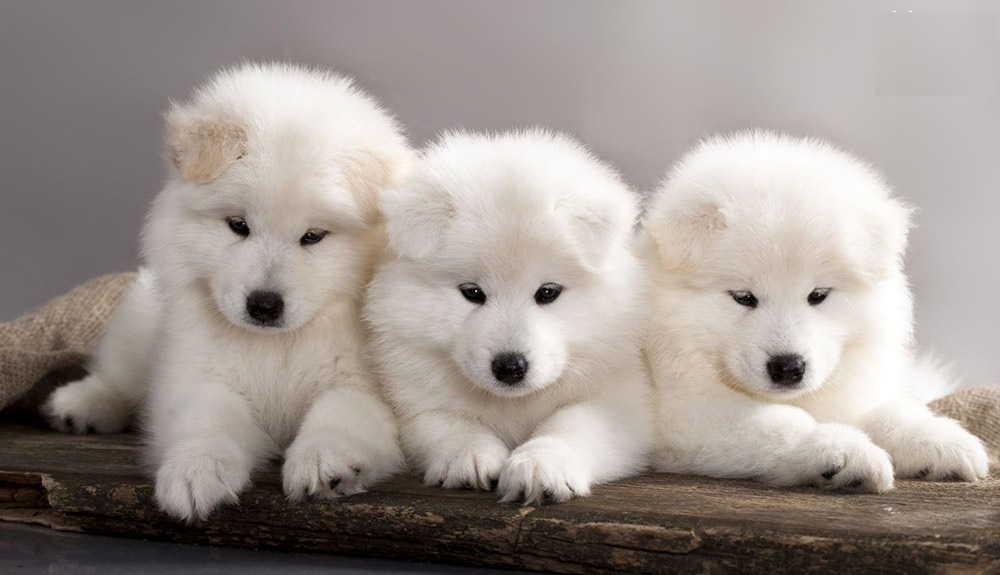
Super cute little Samoyed puppies.
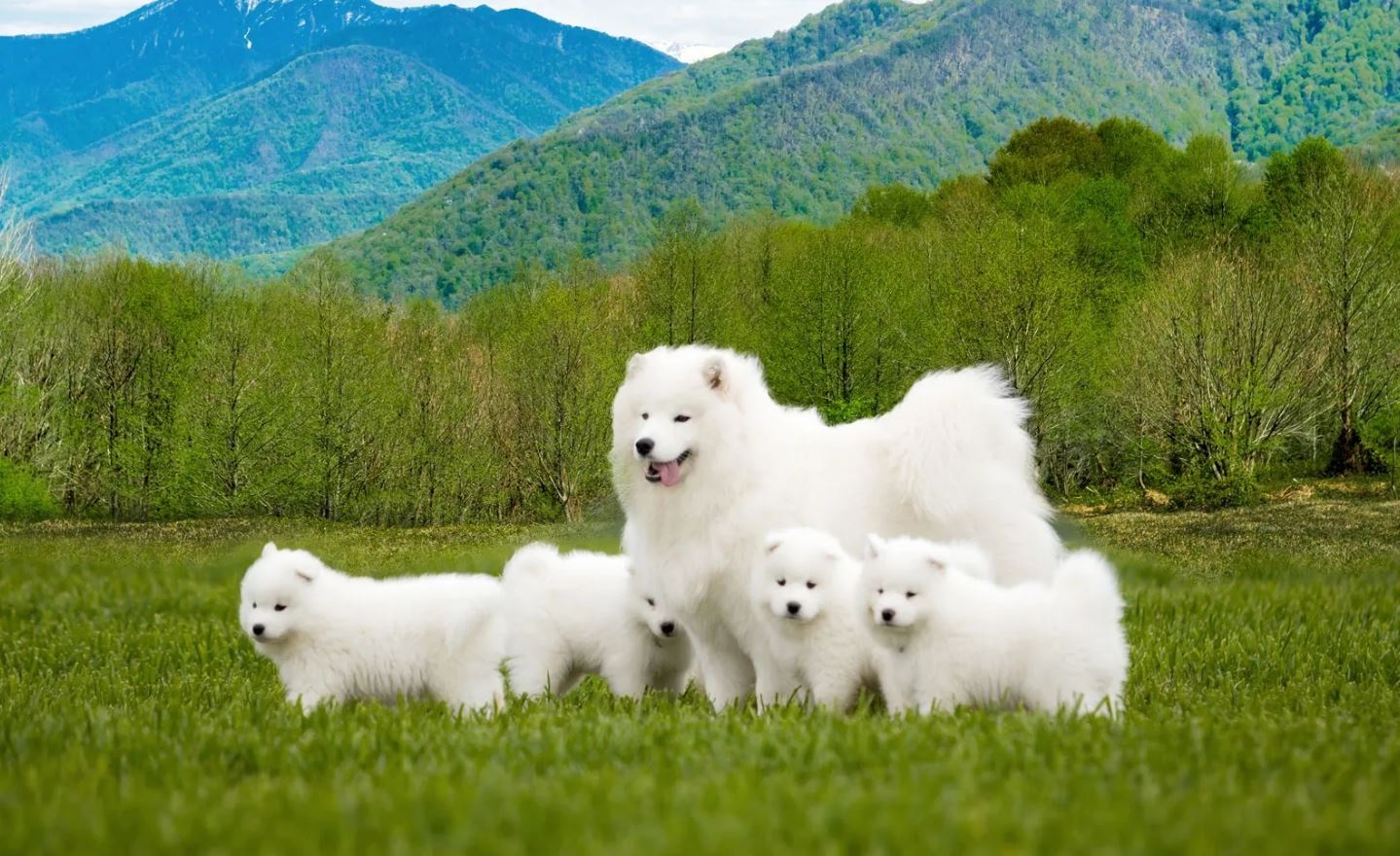
Lovely Samoyed dog family.
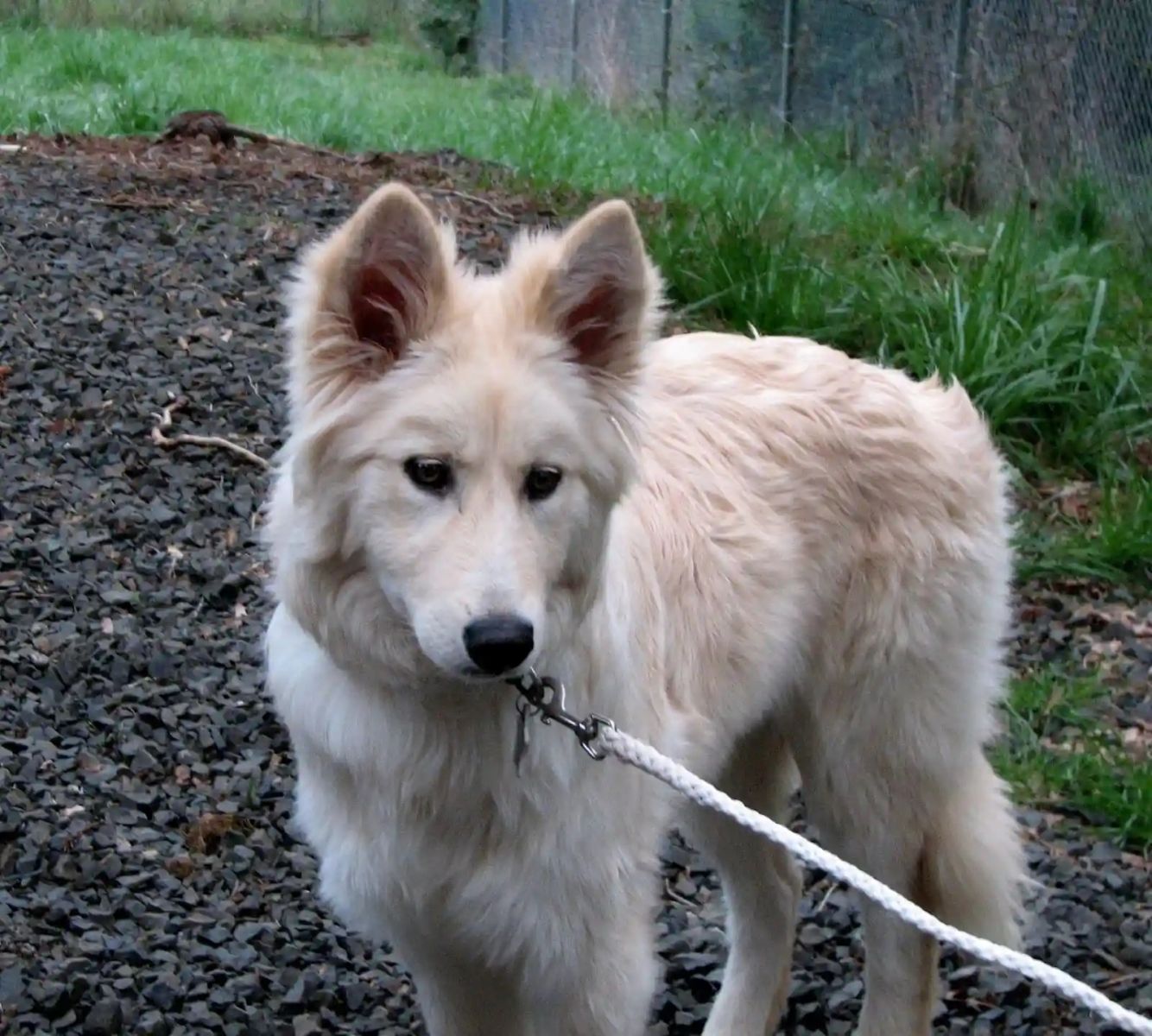
Samoyed Mixed with Local Dogs.
Through this article, dogbreed.wiki has provided detailed information about Samoyed dogs. We hope this content helps you gain a better understanding of this beautiful, snow-white breed.
Don't forget to follow our Blog section regularly to learn more about other dog breeds!
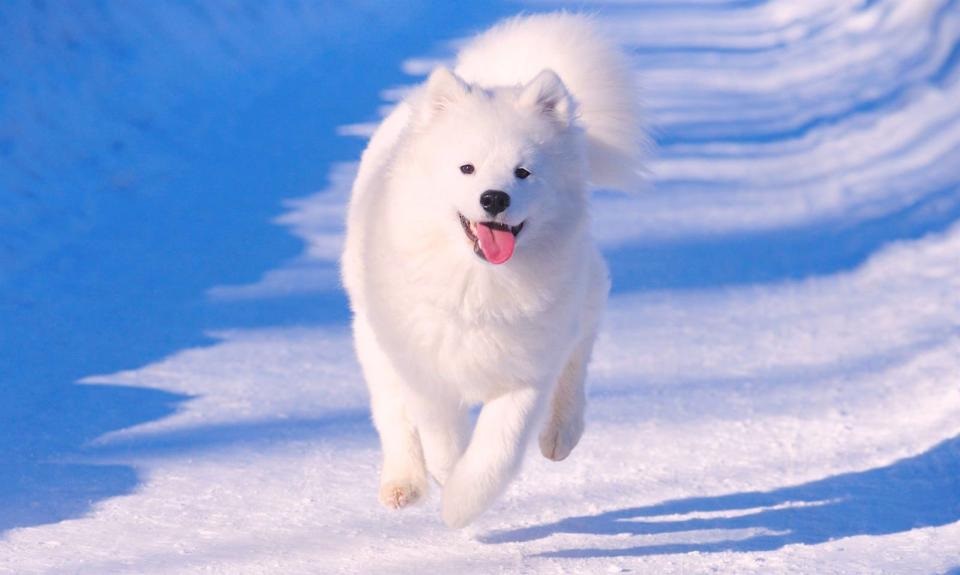

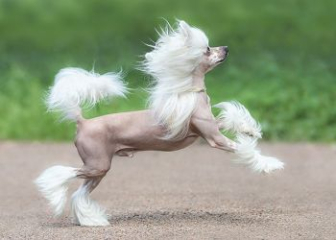

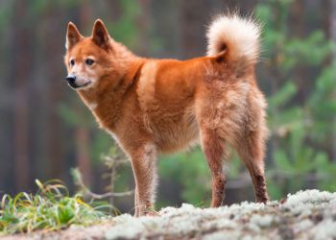

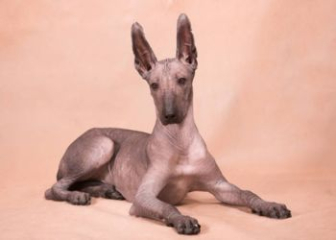



_350x250.jpg)




